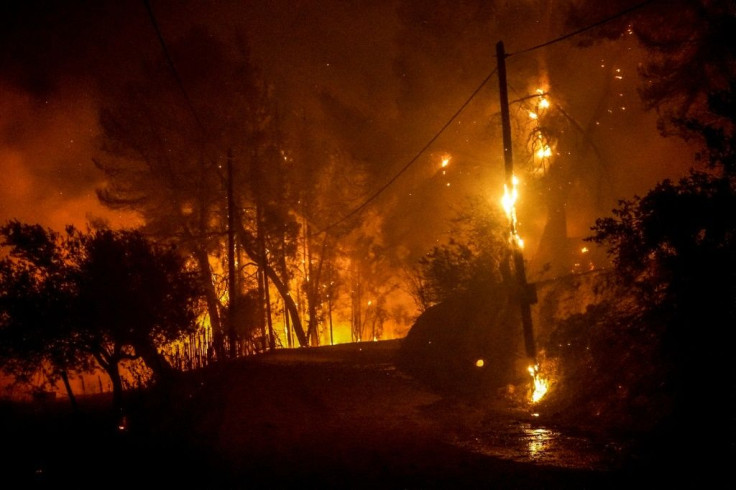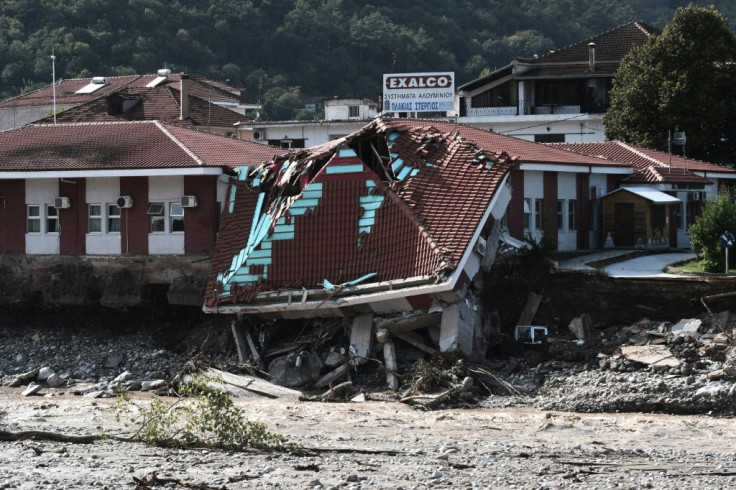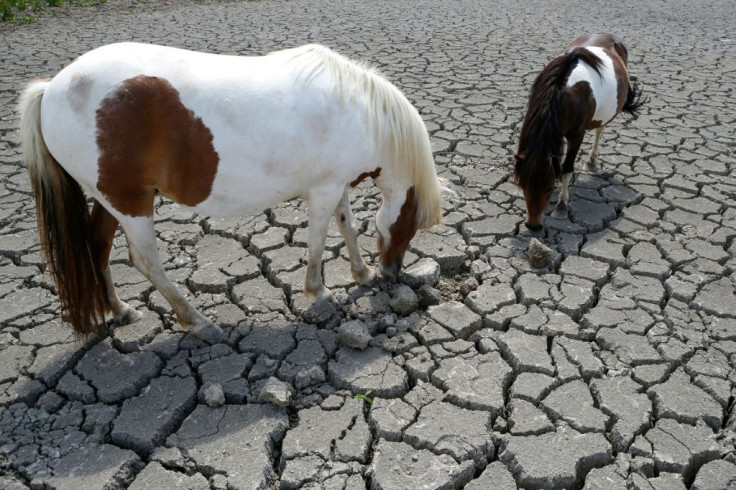Mediterranean Faces Fiercer Heatwaves, Drought, Fires: UN Draft Report
The Mediterranean will be hit by ever fiercer heatwaves, drought and fires supercharged by rising temperatures, according to a draft United Nations assessment seen exclusively by AFP that warns the region is a "climate change hotspot".
The assessment from the Intergovernmental Panel on Climate Change (IPCC) -- to be published next year -- details the future impacts that carbon pollution will have on the region, which this week sweltered in above-average temperatures while Greece and Turkey battle record-breaking blazes.
The Mediterranean's more than half-a-billion inhabitants face "highly interconnected climate risks," says a chapter dedicated to the region in a draft of the IPCC's Working Group II report on climate impacts, due for official release in February 2022.
"Reasons for concern include sea-level rise related risks, land and marine biodiversity losses, risks related to drought, wildfire, alterations of water cycle, endangered food production, health risks in both urban and rural settlements from heat, and altered disease vectors," is its grim assessment.
The draft predicts that temperatures across the Mediterranean are likely to rise faster than the global average in the decades to come, threatening the region's vital agriculture, fisheries and tourism sectors.
Tens of millions more inhabitants will face heightened risk of water shortages, coastal flooding and exposure to potentially deadly extreme heat, it warns.

Depending on how quickly humanity reins in its greenhouse gas emissions, some Mediterranean regions could see rain-fed crop yields decrease by 64 percent, the draft predicts.
Currently, 71 percent of the Middle East and North Africa region's GDP is exposed to high or very high water stress, and 61 percent of its population, it says.
The burnt area of forests in Mediterranean Europe is projected to increase by up to 87 percent if Earth's average surface temperature warms two degrees Celsius above preindustrial levels, and as much as 187 percent in a 3C-hotter world.
Global heating has seen the planet warm 1.1C so far.
While not predicted to be the region of the world worst affected by rising temperatures, the IPCC draft identifies the Mediterranean as a "climate change hotspot".
The most comprehensive assessment of climate impacts ever assembled concludes that only a scenario in which global warming is limited to below 2C -- the core target of the 2015 Paris Agreement -- "is likely to maintain coastal settlements, cultural heritage sites, land and ocean ecosystems in a viable state in most parts of the (Mediterranean) basin".

Although individual fires such as those in Greece and Turkey are hard to blame directly on warmer temperatures, heatwaves and drought caused by climate change are increasing their probability.
"Every heatwave occurring today is made more likely and more intense by human-caused climate change," Friederike Otto, associate director at the University of Oxford's Environmental Change Institute, told AFP.
"Heatwaves are the type of extremes where climate change is really a game changer and it is a major way how climate change has manifested for years already."
Otto, who is co-lead of the World Weather Attribution service that measures climate change's impacts on weather events, said extreme heat was the most pressing threat facing the Mediterranean region as heatwaves "are by far the deadliest extreme events in Europe".

The IPCC draft predicts that up to 93 million more people in the northern Mediterranean could face high or very high heat stress by mid-century.
Depending on how aggressively humanity draws down greenhouse gas emissions, the risk of heat-related death for elderly people in the Middle East and North Africa will be between three and 30 times higher by century's end, it shows.
Climate models project warming across the Mediterranean region about 20 percent higher than global averages, according to the draft.
Southern Europe is currently in the grips of a crippling heatwave with near-record temperatures.
Ilan Kelman, professor of disasters and health at University College London's Institute for Risk and Disaster Reduction, said that when it came to disasters such as fire or flooding, there were practical steps that governments and planners could take to mitigate risk.
These include building less on flood- or fire-prone regions, better forest management, and creating easy, robust escape plans for when things go wrong.
"Heat is different. Climate change is pushing us into areas where we cannot survive," he told AFP.
"To survive this level of heat, the only option is 24/7 indoor cooling and people cannot afford that. We're going to get power outages. The only way is stopping human-caused climate change."
Matthew Jones, research fellow at the University of East Anglia's Tyndall Centre for Climate Change Research, said the average number of days where the Mediterranean faces extreme fire weather conditions had roughly doubled since the 1980s.
"Climate change is forcing Mediterranean landscapes into a flammable state more regularly by drying out vegetation and priming it to burn," he said.
Air quality has sharply dipped in burning regions of Greece and Turkey, and pollution from the blazes had reached as far as Cyprus, according to Mark Parrington, senior scientist at the EU's Copernicus Atmosphere Monitoring Service.
With the population set to reach 657 million by 2050 in Mediterranean areas vulnerable to extreme events, more people are likely to be affected in the future.
"Even if humans were not changing the climate, the risk of these sorts of disasters would be ever-present and substantially increasing," said Kelman.
"We are putting more people and property in harm's way and we are not training people to be able to deal with atypical environmental events like fires, floods and droughts."
© Copyright AFP 2024. All rights reserved.







